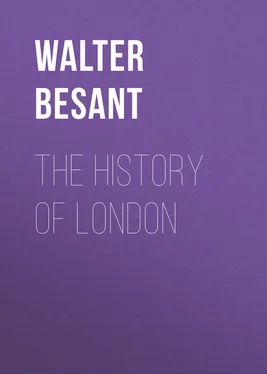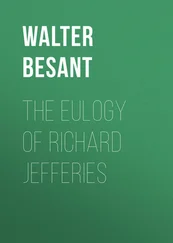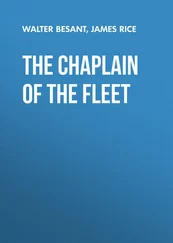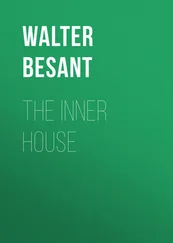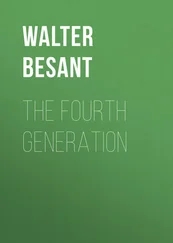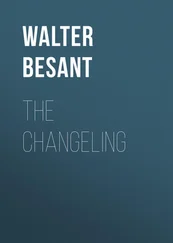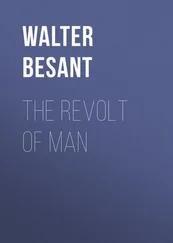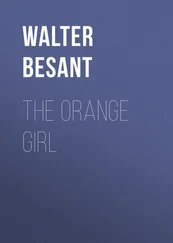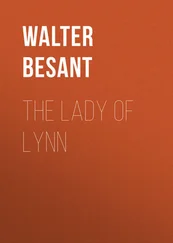Walter Besant - The History of London
Здесь есть возможность читать онлайн «Walter Besant - The History of London» — ознакомительный отрывок электронной книги совершенно бесплатно, а после прочтения отрывка купить полную версию. В некоторых случаях можно слушать аудио, скачать через торрент в формате fb2 и присутствует краткое содержание. Жанр: foreign_antique, foreign_prose, Историческая проза, на английском языке. Описание произведения, (предисловие) а так же отзывы посетителей доступны на портале библиотеки ЛибКат.
- Название:The History of London
- Автор:
- Жанр:
- Год:неизвестен
- ISBN:нет данных
- Рейтинг книги:5 / 5. Голосов: 1
-
Избранное:Добавить в избранное
- Отзывы:
-
Ваша оценка:
- 100
- 1
- 2
- 3
- 4
- 5
The History of London: краткое содержание, описание и аннотация
Предлагаем к чтению аннотацию, описание, краткое содержание или предисловие (зависит от того, что написал сам автор книги «The History of London»). Если вы не нашли необходимую информацию о книге — напишите в комментариях, мы постараемся отыскать её.
The History of London — читать онлайн ознакомительный отрывок
Ниже представлен текст книги, разбитый по страницам. Система сохранения места последней прочитанной страницы, позволяет с удобством читать онлайн бесплатно книгу «The History of London», без необходимости каждый раз заново искать на чём Вы остановились. Поставьте закладку, и сможете в любой момент перейти на страницу, на которой закончили чтение.
Интервал:
Закладка:
We are gradually approaching the modern constitution of the City. The Portreeve or first Magistrate, in the year 1189, in the person of Henry Fitz Aylwin, assumed the title of Mayor – not Lord Mayor: the title came later, a habit or style, never a rank conferred. With him were two Sheriffs, the Sheriff of the City and the Sheriff of the County. There was the Bishop: there was the City Justiciar with his courts. There were also the Aldermen, not yet an elected body.
The Londoners elected Stephen King, and stood by him through all the troubles that followed. The plainest proof of the strength and importance of the City is shown in the fact that when Matilda took revenge on London by depriving the City of its Charters the citizens rose and drove her out of London and made her cause hopeless.
13. FITZSTEPHEN'S ACCOUNT OF THE CITY
The White Tower is the only building in modern London which belongs to Norman London. Portions remain – fragments – a part of the church of St. Bartholomew the Great, a part of the church of St. Ethelburga, the crypt of Bow Church: very little else. All the rest has been destroyed by time, by 'improvements,' or by fire, the greatest enemy to cities in every country and every age. Thus, three great fires in the tenth and eleventh century swept London from end to end. No need to ask if anything remains of the Roman or the Saxon City. Not a vestige is left – except the little fragment, known as the London Stone, now lying behind iron bars in the wall of St. Swithin's Church. Churches, Palaces, Monasteries, Castles – all perished in those three fires. The City, no doubt, speedily sprang again from its ashes, but of its rebuilding on each occasion we have no details at all.
Most fortunately, there exists a document priceless and unique, short as it is and meagre in many of its details, which describes London as it was in the reign of Henry II. It is written by one FitzStephen, Chaplain to Thomas Becket. He was present at the murder of the Archbishop and wrote his life, to which this account is an introduction.
He says, first of all, that the City contained thirteen larger conventual churches and a hundred and twenty-six parish churches. He writes only fifty years after the Great Fire, so that it is not likely that new parishes had been erected. All the churches which had been destroyed were rebuilt. Most of them were very small parishes, with, doubtless, very small churches. We shall return presently to the question of the churches.
On the east was the White Tower which he calls the 'Palatine Castle:' on the west there were two towers – there was the Tower called Montfichet, where is now Blackfriars station, and Baynard's Castle, close beside it. The walls of the City had seven double gates. The river wall had by this time been taken down. Two miles from the City, on the west, was the Royal Palace (Westminster), fortified with ramparts and connected with the City by a populous suburb. Already, therefore, the Strand and Charing Cross were settled. The gates were Aldgate, Bishopsgate, Cripplegate, Aldersgate, Newgate, Ludgate, and the Bridge.
FitzStephen says that the citizens were so powerful that they could furnish the King with 20,000 horsemen and 60,000 foot. This is clearly gross exaggeration. If we allow 500 for each parish, we get a population of only 63,000 in all, and in the enumeration later on, for the poll tax by Richard the Second, there were no more than 48,000. This, however, was shortly after a great Plague had ravaged the City.
But the writer tells us that the citizens excelled those of any other city in the world in 'handsomeness of manners and of dress, at table, and in way of speaking.' There were three principal schools, the scholars of which rivalled each other, and engaged in public contests of rhetoric and grammar.
Those who worked at trades and sold wares of any kind were assigned their proper place whither they repaired every morning. It is easy to make out from the surviving names where the trades were placed. The names of Bread Street, Fish Street, Milk Street, Honey Lane, Wood Street, Soapers' Lane, the Poultry, for instance, indicate what trades were carried on there. Friday Street shows that the food proper for fast days was sold there – namely, dried fish. Cheapside preserves the name of the Chepe, the most important of all the old streets. Here, every day, all the year round, was a market held at which everything conceivable was sold, not in shops, but in selds , that is, covered wooden sheds, which could be taken down on occasion. Do not think that 'Chepe' was a narrow street: it was a great open space lying between St. Paul's and what is now the Royal Exchange, with streets north and south formed by rows of these selds or sheds. Presently the sheds became houses with shops in front and gardens behind. The roadway on the south side of this open space was called the Side of Chepe. There was another open space for salesmen called East Chepe, another at Billingsgate, called Roome Lane, another at Dowgate – both for purposes of exposing for sale imports landed on the Quays and the ports of Queenhithe and Billingsgate. Those who have seen a market-place in a French town will understand what these places were like. A large irregular area. On every side sheds with wares for sale: at first all seems confusion and noise: presently one makes out that there are streets in orderly array, in which those who know can find what they want. Here are mercers; here goldsmiths; here armourers; here glovers; here pepperers or grocers; and so forth. West Chepe is the place of shops where they sell the things made in the City and all things wanted for the daily life.
On the other side of the Walbrook, across which there is a bridge where is now the Poultry, is East Chepe, whither they bring all kinds of imported goods and sell them to the retailers: and by the river side the merchants assemble in the open places beside Queenhithe and Billingsgate to receive or to buy the cargoes sent over from France, Spain, and the Low Countries. One more open space there was, that round St. Paul's, the place where the people held their folkmotes. But London was not, as yet, by any means built over. Its northern parts were covered with gardens. It was here, as we shall see, that the great monasteries were shortly to be built.
14. FITZSTEPHEN'S ACCOUNT OF THE CITY
Outside the walls, he says, there were many places of pleasant resort, streams and springs among them. He means the Fleet River winding at the bottom of its broad valley: farther west Tyburn and Westbourne: on the south the Wandle, the Effra, the Ravensbourne. There was a well at Holywell in the Strand – it lies under the site of the present Opéra Comique Theatre: and at Clerkenwell: these wells had medicinal or miraculous properties and there were, no doubt, taverns and places of amusement about there. At Smithfield – or Smooth Field – just outside the City walls, there was held once a week – on Friday – a horse fair. Business over, horse racing followed. Then the river was full of fish: some went fishing for their livelihood: some for amusement: salmon were plentiful and great fish such as porpoises sometimes found their way above Bridge.
Then there were the sports of the young men and the boys. They played at ball – when have not young men played at ball? The young Londoners practised some form of hockey out of which have grown the two noble games of cricket and golf. They wrestled and leaped. Nothing is said about boxing and quarterstaff. But perhaps these belonged to the practice of arms and archery, which were never neglected, because at any moment the London craftsman might have to become a soldier. They had cock fighting, a sport to which the Londoner was always greatly addicted. And they loved dancing with the girls to the music of pipe and tabor. In the winter, when the broad fens north of the walls were frozen, they skated. And they hunted with hawk and hound in the Forest of Middlesex, which belonged to the City.
Читать дальшеИнтервал:
Закладка:
Похожие книги на «The History of London»
Представляем Вашему вниманию похожие книги на «The History of London» списком для выбора. Мы отобрали схожую по названию и смыслу литературу в надежде предоставить читателям больше вариантов отыскать новые, интересные, ещё непрочитанные произведения.
Обсуждение, отзывы о книге «The History of London» и просто собственные мнения читателей. Оставьте ваши комментарии, напишите, что Вы думаете о произведении, его смысле или главных героях. Укажите что конкретно понравилось, а что нет, и почему Вы так считаете.
